conflict
Beijing ‘Imminent’ Threat to Taiwan: U.S. Defense Secretary Issues Stark Warning
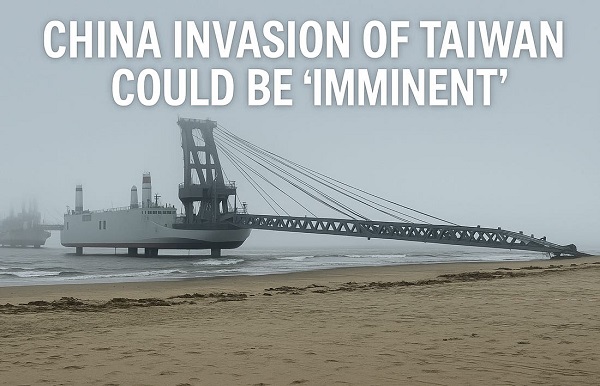
 Sam Cooper
Sam Cooper
“It has to be clear to all that Beijing is credibly preparing to potentially use military force to alter the balance of power in the Indo-Pacific.”
In an unprecedented escalation of U.S. military preparedness rhetoric, Defense Secretary Pete Hegseth today warned that the threat of a Chinese invasion of Taiwan—and broader actions against Asian states—is “real and could be imminent.” Speaking at the Shangri-La Dialogue in Singapore, Hegseth made clear that the United States now views China’s intentions as an urgent and rising threat, not a distant risk.
“We are preparing for war in order to deter war to achieve peace through strength,” Hegseth said. “Any attempt by Communist China to conquer Taiwan by force will result in devastating consequences for the Indo-Pacific and the world. There’s no reason to sugarcoat it. The threat China poses is real and could be imminent.”
A clip of Hegseth’s address quickly circulated on social media. In response, Taiwan’s security chief Joseph Wu wrote: “It’s critical for all U.S. allies and partners to remain clear-eyed about China’s ambitions. Taiwan is investing seriously in its own defense. But recent PLA activity suggests Taiwan is not the only target. We must work together to prevent the CCP from dominating the Indo-Pacific.”
Recent military intelligence shows that Beijing is actively preparing for large-scale operations. In April 2025, China launched “Strait Thunder 2025A,” a major military exercise involving 135 warplanes and 38 warships encircling Taiwan. The drills simulated both a blockade and an amphibious landing. Around the same time, the Shandong aircraft carrier group maneuvered to within 24 nautical miles of Taiwan’s coast. Intelligence analysts warn that such incursions are likely to increase, with growing concern that operations staged as exercises could serve as cover for the sudden launch of a full-scale invasion.
“U.S. allies in the Indo-Pacific can and should upgrade their own defenses,” Hegseth added. “It has to be clear to all that Beijing is credibly preparing to potentially use military force to alter the balance of power in the Indo-Pacific.”
He drew a direct connection to President Donald Trump’s campaign to push NATO countries toward increased defense spending.
The Indo-Pacific Will Be ‘Your Generation’s Fight’
Two days before Hegseth’s speech in Singapore, a parallel message echoed across the U.S. military establishment. On May 29, speaking at the U.S. Air Force Academy’s commencement, Secretary of the Air Force Troy E. Meink delivered a blunt forecast: the cadets’ careers would not be shaped by past wars in the Middle East, but by looming great-power conflict in the Pacific.
“Class of 2025,” Meink said, “the Indo-Pacific will be your generation’s fight. And you will deliver the most lethal force this nation has ever fielded—or we will not succeed.”
Framing China as the central challenge of the era, Meink echoed Hegseth’s call for deterrence through strength. He stressed that defending the U.S. homeland must go hand-in-hand with building a Joint Force capable of neutralizing China’s expanding military capabilities—including its missile arsenal, cyber units, and maritime coercion in the East and South China Seas.
Meink also pointed to the modernization of U.S. deterrence infrastructure, including development of the so-called “Golden Dome”—a proposed network of land- and space-based sensors and interceptors designed to detect and defeat hypersonic and ballistic missile threats aimed at North America and U.S. bases abroad.
China’s Amphibious Blueprint: From Dockyard to Beachhead
Meanwhile, analysis of striking new satellite imagery reveals a dramatic development in China’s military posture. A series of large vessels under construction at Chinese shipyards appear designed to sail toward Taiwan’s shores, lower pilings into the seabed, and transform into floating sections of a mobile landing dock—assembled in real time upon arrival.
The design, which eliminates the need for ports or tugboats, reinforces mounting concerns that Beijing’s preparations are not symbolic, but operational.
Naval analyst Tom Shugart, building on open-source intelligence findings, released high-resolution imagery showing the vessels’ defining features. Each ship appears purpose-built for amphibious warfare—engineered to deliver tanks and armored vehicles directly onto contested beaches with speed and efficiency.
“These aren’t simple barges,” Shugart wrote. “They look like self-powered landing ships.”
Each vessel includes six vertical pilings that can be lowered to anchor the ship to the ocean floor, stabilizing it during offload. Two wide ramps can be unfolded to connect with roll-on/roll-off cargo ships, allowing vehicles to drive directly from transport to shore.
This floating dock system would allow China to launch a mechanized amphibious assault with minimal delay—an essential capability for a rapid strike across the Taiwan Strait.
conflict
“Will Be in History Books”: Zelensky Hails Long-Range Drone Strike That Hit Dozens of Russian Bombers
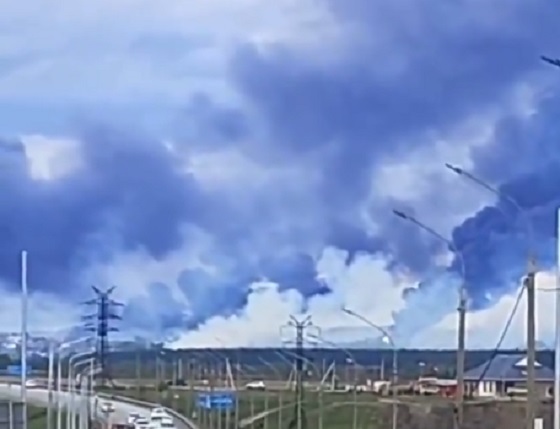
 Sam Cooper
Sam Cooper
“Borderline Insane”: Analyst Warns American Military Must Prepare as Ukraine’s Deep Strike Signals China Could Launch Similar Attacks from U.S. Ports in Event of War Over Taiwan

KYIV — In its most daring covert action of the war, Ukraine says it has destroyed or severely damaged more than 40 Russian long-range strategic aircraft in a meticulously planned drone assault that struck four military airbases deep inside Russian territory. The campaign, known as Operation Spider’s Web, marks a stunning escalation in Ukraine’s asymmetric warfare strategy—and what some analysts are calling a historic reversal that could tilt the odds in peace negotiations against the larger aggressor.
The mission—overseen by Ukraine’s Security Service (SBU) and personally authorized by President Volodymyr Zelensky—reportedly took more than 18 months to prepare. SBU operatives smuggled first-person-view drones into Russia hidden inside wooden mobile cabins mounted on civilian cargo trucks. When activated remotely, the trucks’ roofs opened and the drones launched directly at parked Russian bombers.
“This was our most long-range operation,” Zelensky posted Sunday on X, noting the assault involved only Ukrainian forces. “One year, six months, and nine days from the start of planning to execution. These are Ukrainian actions that will undoubtedly be in history books.”
The strikes hit four airbases far from the front lines: Belaya airbase in Irkutsk Oblast, Olenya in Murmansk near the Arctic Circle, Dyagilevo in Ryazan Oblast, and Ivanovo in central Russia.
According to Ukrainian intelligence sources cited by the BBC, the damaged assets include Tu-95 and Tu-22M3 nuclear-capable strategic bombers, as well as an A-50 airborne early warning and control aircraft. The total estimated damage exceeds $2 billion USD.
Footage posted on Russian and Ukrainian Telegram channels showed plumes of smoke rising from the affected airbases. In one widely circulated clip, a bystander can be heard saying drones had launched from “a Kamaz truck near a petrol station.” Russian state media acknowledged strikes across five regions and labeled the attacks “a terrorist act.” However, prominent Russian military bloggers confirmed the loss of aircraft and critical infrastructure, including fuel storage depots.
Irkutsk Governor Igor Kobzev confirmed the Belaya strike, stating the drones had been launched from a civilian truck and that the situation was “under control” with no casualties reported.
SBU officials told the BBC that Spider’s Web was a “logistical and operational breakthrough,” describing a multi-stage smuggling effort that first inserted the FPV drones into Russia, followed later by mobile launch platforms. “Once on Russian territory, the drones were hidden under the roofs of these cabins,” one source said. “At the right moment, the roofs were remotely opened, and the drones took off.”
Zelensky credited SBU chief General Vasyl Maliuk with executing the unprecedented strike. “I thanked General Maliuk for this success of Ukraine,” Zelensky said. “We are doing everything to make Russia feel the need to end this war. Russia started this war. Russia must end it.”
The operation comes amid intensifying cross-border attacks by both sides. Hours earlier, a Russian missile barrage killed 12 Ukrainian soldiers and injured over 60 at a training base. Ukrainian air defenses responded by reportedly downing 385 Russian aerial targets across multiple regions.
The timing of the drone assault—just ahead of a second round of peace talks in Istanbul on Monday—appears aimed at pressuring Moscow. Zelensky has demanded a “complete and unconditional ceasefire,” while Russian officials are calling for a halt to Western arms transfers to Ukraine, a condition Kyiv rejects.
“These strikes are a clear and effective guarantee of Ukraine’s security,” Zelensky said. “Glory to Ukraine.”
Military analyst Tom Shugart noted the implications of the strike could extend far beyond the European theater, warning that Ukraine’s use of covert drone launches deep inside enemy territory raises implications for China’s global trade and access to Western ports.
“A reminder, given today’s Ukrainian drone strikes, that it is becoming borderline-insane that we routinely allow ships owned and operated by DoD-designated Chinese military companies to sit in our ports with thousands of containers onboard and under their control,” Shugart posted Sunday afternoon, referencing mounting U.S. tensions with China over its aggression toward Taiwan.
The Bureau is a reader-supported publication.
To receive new posts and support my work, consider becoming a free or paid subscriber.
Invite your friends and earn rewards
conflict
Russia floats peace talks with Ukraine next week after Trump pressures Putin
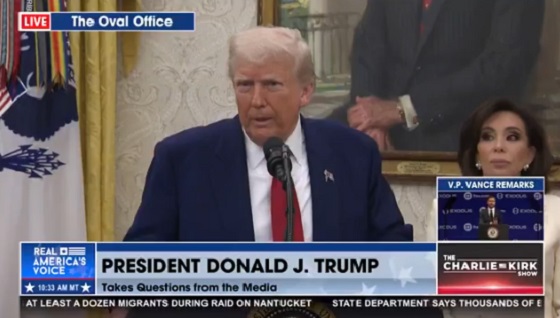
Quick Hit:
Russia has proposed a new round of peace talks with Ukraine in Istanbul next week—an apparent response to rising pressure from President Trump, who recently warned Vladimir Putin that he’s “playing with fire” by continuing to bomb Ukrainian cities.
Key Details:
- Russia offered to meet Ukraine in Istanbul on Monday to exchange written ceasefire proposals.
- Ukrainian officials see it as a move to appease Trump, not a genuine push for peace.
- Trump has threatened economic retaliation against Russia if attacks on Ukraine continue.
🇺🇸 TRUMP: “WE’LL KNOW IN 2 WEEKS IF PUTIN IS STALLING”
"We're gonna find out whether or not he's tapping us along or not.
And if he is, we'll respond a little bit differently."
Source: @RealAmVoice https://t.co/XWXakS3ye2 pic.twitter.com/2nXkaJZaq4
— Mario Nawfal (@MarioNawfal) May 28, 2025
Diving Deeper:
The Kremlin has proposed a fresh round of peace talks with Ukraine next week, hoping to exchange written proposals for a ceasefire agreement and possible terms to end the war. Russian and Ukrainian officials confirmed the offer on Thursday, with the proposed meeting set for Monday in Istanbul.
The proposal came directly from Putin adviser Vladimir Medinsky, who leads Russia’s negotiating team. In a call with Ukrainian Defense Minister Rusten Umerov, Medinsky stated, “We are ready to begin a substantive discussion of each of the points of the package agreement on the future ceasefire.”
But behind the scenes, Ukrainian officials are skeptical. According to a source close to Ukrainian President Volodymyr Zelensky, the proposal appears more like a diplomatic gesture aimed at placating President Trump than a sincere bid to end hostilities. Ukraine has not prepared any written peace offer, the source said, instead advocating for an unconditional ceasefire before formal negotiations. “Maybe the Russians can just send their peace memo by email,” the source added.
The renewed Russian outreach follows blunt warnings from President Trump, who has grown increasingly frustrated with Putin’s refusal to stop the bombardment of Ukrainian cities. Earlier this week, Trump accused Putin of “playing with fire” and signaled that economic consequences could be on the table if Moscow continues to ignore his calls for peace.
“I don’t like rockets fired into cities and I am not going to allow it,” Trump told reporters. He acknowledged that sanctions or tariffs were being considered but said he was holding off to avoid jeopardizing a possible deal. “I don’t want to screw it up by doing that,” Trump said. “I am a lot tougher than others… but you have to know when to use that.”
This marks the second round of direct talks between Russia and Ukraine, with the first taking place in Istanbul two weeks ago. That meeting ended with little progress. Since then, Trump has attempted to personally broker a ceasefire, including a rejected proposal for Vatican-hosted talks.
Putin had previously promised Trump that a “peace memo” would be delivered within days. That promise remains unfulfilled, and in the meantime, Russian airstrikes on Ukrainian cities have intensified, further testing Trump’s patience. “We are gonna find out soon if [Putin] is tapping us along or not, and if he is we will respond a little bit differently,” Trump warned.
Trump also noted that his envoy, Steve Witkoff, is actively engaging with Russian officials. “He’s dealing with Putin very strongly right now to see if he wants a deal,” Trump said.
As of now, Ukraine is weighing its options. While the proposed meeting in Istanbul could signal movement, Ukrainian officials remain cautious—viewing the Kremlin’s motives as more about managing international optics, particularly with Trump, than genuinely pursuing peace.
-

 Addictions2 days ago
Addictions2 days agoMan jailed for trafficking diverted safer supply drugs, sparking fresh debate over B.C. drug policies
-

 Fraser Institute3 hours ago
Fraser Institute3 hours agoFederal government’s ‘affordable housing’ strategy doomed without strong income growth
-

 Alberta2 days ago
Alberta2 days agoHow Trump and Alberta might just save Canada
-
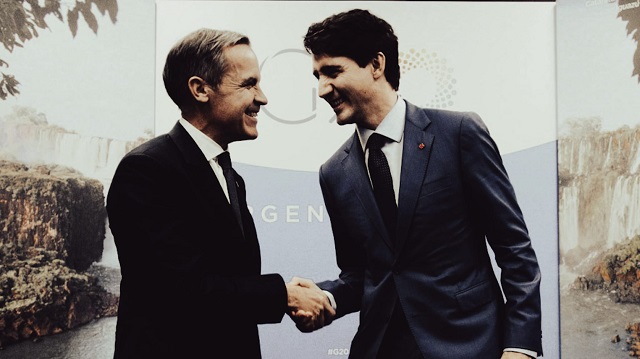
 Carbon Tax4 hours ago
Carbon Tax4 hours agoCarney picks up Trudeau’s net-zero wrecking ball
-

 Bruce Dowbiggin2 days ago
Bruce Dowbiggin2 days agoCaitlin Clark Has Been The Real Deal. So Her WNBA Rivals Hate Her
-
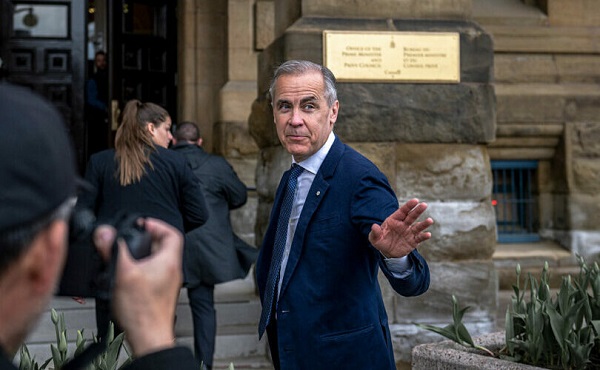
 Business2 days ago
Business2 days agoThe Liberals Finally Show Up to Work in 2025
-

 Alberta2 days ago
Alberta2 days agoJann Arden’s Rant Will Only Fuel Alberta’s Separation Fire
-

 Banks2 days ago
Banks2 days agoCanada Pension Plan becomes latest institution to drop carbon ‘net zero’ target


